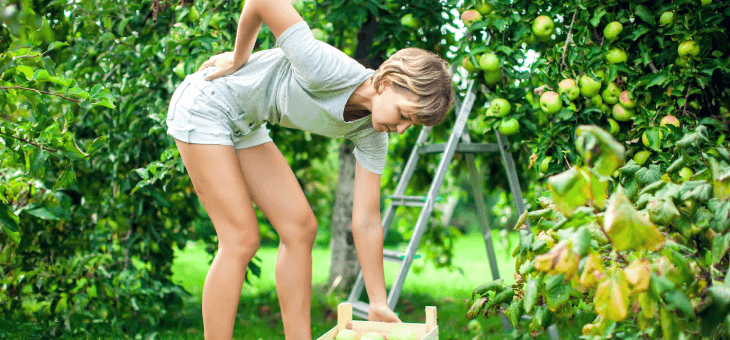Are you digging too much? Bending over without bending your knees? Carrying pots that are too heavy for you? So many gardeners end up with back problems simply by overdoing it in their open spaces.
Phil Evans, lead physiotherapist at the Urban Body clinic, is seeing an increase in gardening-related injuries.
“In summer, when we’ve had a lot of rain and a lot of sun, the garden grows quickly and the first thing people do is try to battle the whole garden. They’ve gone from not a lot of gardening over the winter to gardening solidly the whole weekend – and then they wonder why they hurt,” he says.

“Lower back injuries are the most common injuries we are seeing, largely among gardeners who may be 60-plus and who already have a degree of wear and tear. We also see a lot of shoulder injuries caused by too much digging and reaching up above your head repetitively to water or prune or whatever.”
He offers the following advice to minimise the risk of back injuries when gardening.
1. Warm up

“Many gardeners just don’t warm up,” Mr Evans says. “You might not consider gardening a sport but people are constantly bending over. Do some stretches for your lower back, or even go for a brisk walk which will activate all the muscles, wake up blood flow and you’ll be much more mobile to allow your body to get into positions for gardening, rather than going in cold.”
Read: Seven tips for creating a wellbeing-boosting garden
2. Don’t bend from the waist
“When you are gardening, avoid bending from the waist. People who do that for a few hours wonder why they can’t straighten up. I would encourage people to bend from the knees, so their back is in a much straighter, stronger position. Alternatively, get on all fours and do gardening such as weeding kneeling.”

3. Pace yourself
“Be realistic as to what you are going to achieve,” he advises. “Stop after maybe a couple of hours’ work rather than doing it until the sun goes down. Take regular breaks. Learn to pace yourself – it may just be the lawn today, or just the weeding rather than trying to do everything at once.”
4. Get help with the heavy lifting
“If you are trying to manoeuvre heavy stuff like bags of compost use a wheelbarrow,” Mr Evans advises. “If you are picking up something heavy from the ground get a partner or friend to help you. It’s about bending your knees and keeping your back straight and lifting from the ground.” If you can get help, share the weight equally, he adds.
When lifting a heavy pot that feels too heavy to move on your own, find help or get a trolley to relocate it.
5. Use ergonomic tools
View this post on Instagram
“When digging, try to use a long-handled tool, which will mean you don’t have to bend over as much,” he says. “But the best advice is to do it little and often to significantly reduce the risk of injury.”
Read: It’s spring! Time to get a head start on gardening jobs
6. Think about height
Even when working on light tasks such as sowing seeds, make sure you are working at the right level for you, Mr Evans advises. “If you are bent over, even if you are not holding anything, the muscles will fatigue, which is when you will start irritating and inflaming the ligaments of your lower back, which is why we get a lot of our pain.”
Raise where you are going to do your sowing – bring it to a table and sit down or do it or set your bench at a height where you are not going to be bending over, he suggests.
View this post on Instagram
7. Avoid repetition
Repetitive jobs such as hedge trimming or pruning tall shrubs can lead to injuries such as rotator cuff and tennis elbow, he warns.
“With the shoulder, if everything is too high and you have your arms above your head for a sustained period, that will aggravate your rotator cuff. Again, bringing yourself to a better level will alleviate that problem. If you have a large hedge to trim, don’t do it all at once. Take a break regularly and stay hydrated.”
7. Pivot instead of twist
One of the most common causes of back pain is the combination of bending and rotating and when done repetitively, you’re almost guaranteed to suffer, Mr Evans warns.
When digging, for example, don’t rotate or twist from your waist but pivot on your feet instead. Keep your ribs in line with your pelvis and always move them as a unit, he advises.
Read: How to use vertical space to grow edibles in a small garden
8. Strengthen your core
“Long term, strengthen your hamstrings, glutes and your lower back by exercises such as a bridge, but if you’re really struggling to know exactly what to do, I would encourage people to join a Pilates class for strengthening or yoga class for flexibility. A combination of the two will dramatically improve your back health and therefore significantly reduce risk of injury.”
What’s the first job you’ll be tackling in the garden this spring? Let us know in the comments section below.
– With PA

